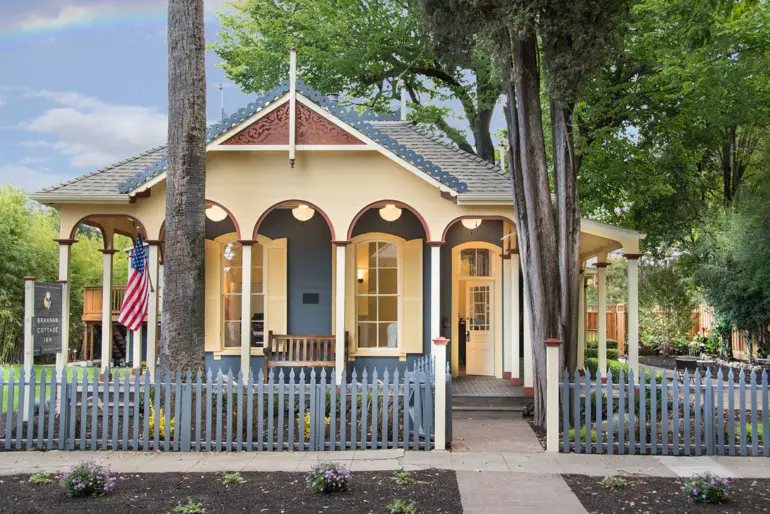A magnificent 19th-century resort founded by Samuel Brannan still beckons today.
IN SAN FRANCISCO, where street names bear witness to a colorful past, the name Brannan commemorates Samuel Brannan, a native of Maine, who came to what the Spaniards called Yerba Buena in 1846. He was a printer by trade, but as the leader of a settlement expedition on a ship called Brooklyn he fittingly issued the California Star, San Francisco’s first official newspaper, in 1847.
Before long, he became an enterprising and influential real estate owner and one of the first grand buildings in the city, at the corner of California and Montgomery streets, was his.
Ambitious and enterprising, Brannan soon became interested in developing hot springs resorts north of Marin. In a valley close to the base of Mount St. Helena, more than 500 years before the first Europeans arrived, the native Wappo tribe had discovered natural volcanic springs. News of the healing powers of those Indian springs attracted settlers northward, and Brannan cleverly helped extend rail tracks across rural Marin to transport passengers who had taken the ferry from San Francisco.

In 1860, Brannan set out to establish a resort modeled after a famous retreat on the East Coast. His so-called “Saratoga (Springs) of California” inadvertently gave Calistoga its name (a conflation of California and Saratoga) and the hot springs, which opened to the public in 1862, were an instant success. Fourteen cottages surrounding a skating pavilion, bathhouse, restaurant and dance hall formed a magical, carefree retreat. By 1880, when Robert Louis Stevenson spent the summer in the vicinity while writing Silverado Squatters, Calistoga was a coveted destination for residents of Marin and the entire Bay Area. Stevenson described the experience as “a very pleasant way … by which you have a little country cottage of your own, without domestic burdens, and by the day or week.” The “weedy palm” in the valley Stevenson wrote about now towers above the town in front of the last and most elegant of Brannan’s cottages, also one of the first buildings in Calistoga to be listed with the National Register of Historic Places. Leland Stanford owned it for a time, and recently it reopened as the Brannan Cottage Inn, exactly where it always stood, at 109 Wappo Avenue.

